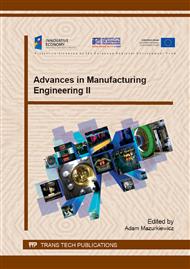p.124
p.130
p.136
p.142
p.148
p.154
p.160
p.169
p.175
Methodology of Comparative Studies on Air-Handling Units with Heat Recuperation
Abstract:
The increasing prices of energy and the drive to reduce the emission of greenhouse gases into the atmosphere observed in the recent years have contributed to the intensive development of research on how to reduce the energy consumption of buildings. The confirmations of the current trends are the formal and legal regulations of the European Union that require the buildings to be passive and “zero-energy” in the near future. The introduction of new elements helping one to save energy in the structure of a building requires their formal verification and the confirmation of their safety, effectiveness, and parameters crucial from the point of their application in residential buildings and offices. The authors present an original prototype of an innovative device and a methodology of conducting studies on air-handling units with heat recuperation used in passive and energy-saving buildings. They also discuss the structure and the modus operandi of the system that reconstructs the actual operating conditions of a tested object. The system was used for tests on the tightness of several air-handling units, which also aimed at the verification of their thermal efficiency and the effectiveness of the recuperation of humidity. Air-handling unit tests came from different manufacturers, and they all had the function of heat recuperation. The authors present the results of their investigations that enabled the assessment of the safety of the objects tested, and they also facilitated the comparison of their performance parameters deciding on the energy effect. The tests also formed the foundation for the verification of the developed research system.
Info:
Periodical:
Pages:
148-153
Citation:
Online since:
August 2015
Authors:
Price:
Сopyright:
© 2015 Trans Tech Publications Ltd. All Rights Reserved
Share:
Citation:


